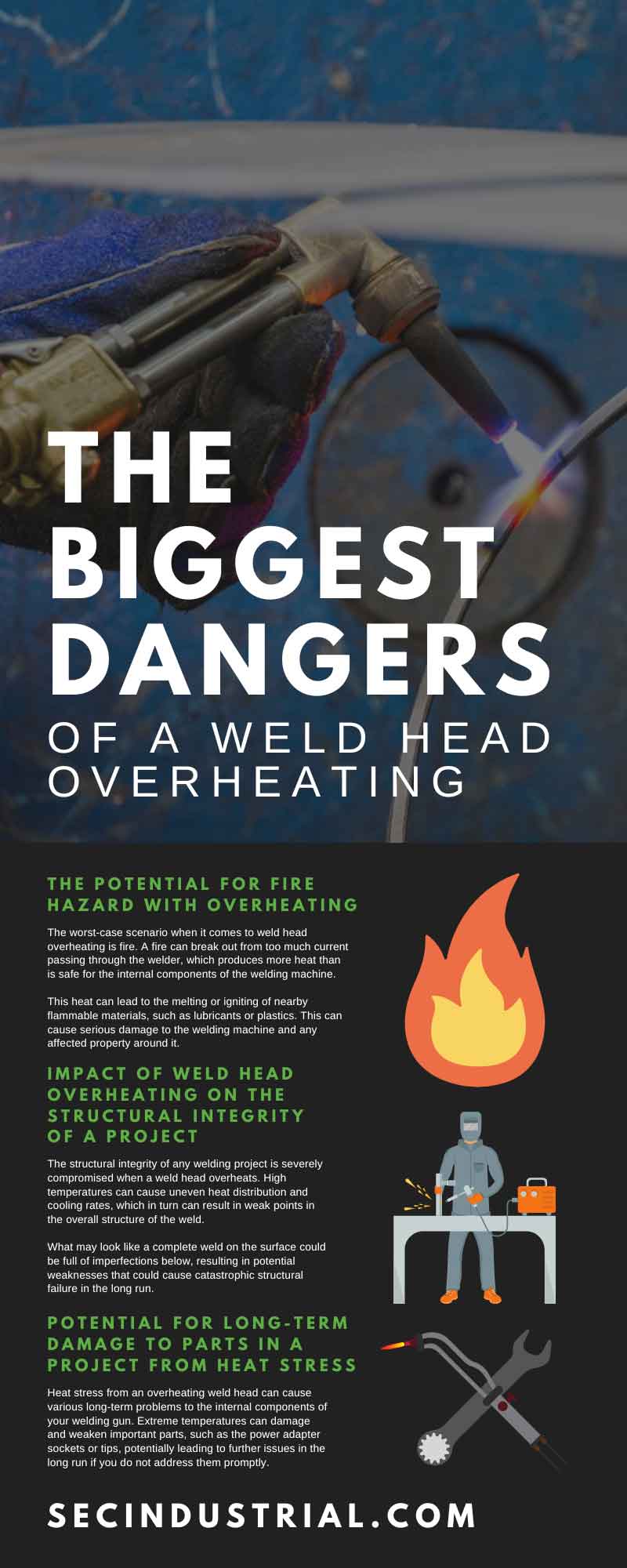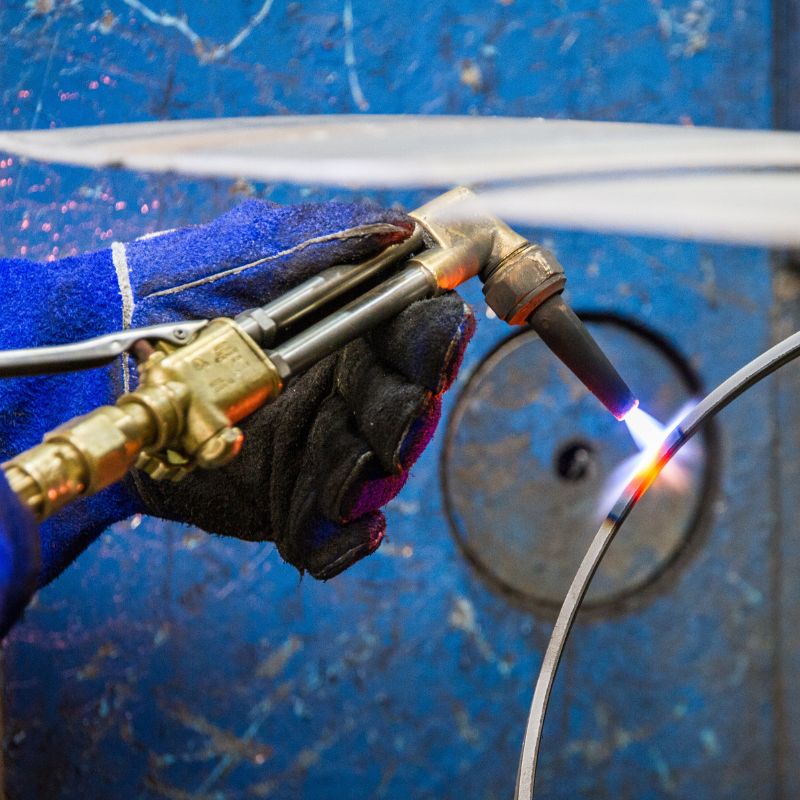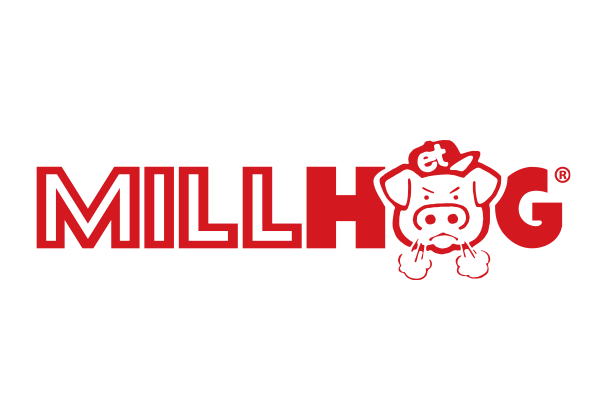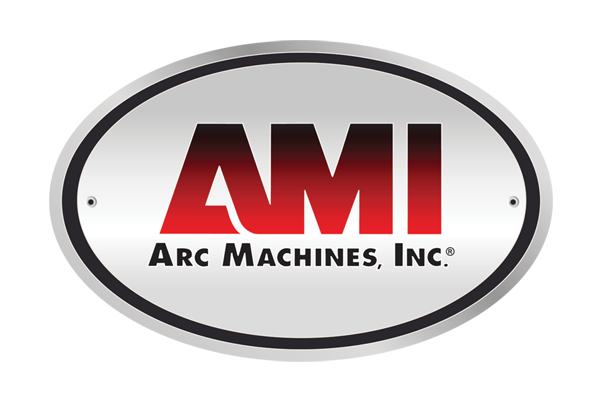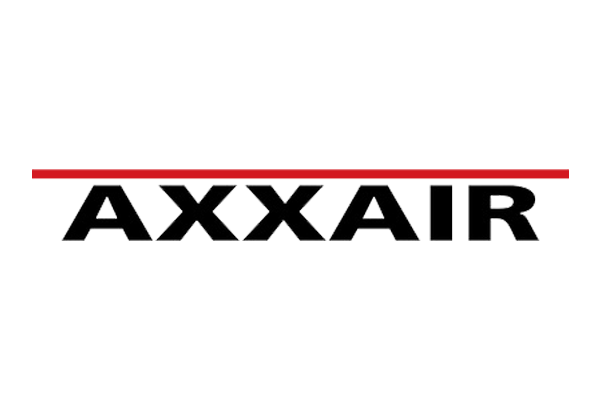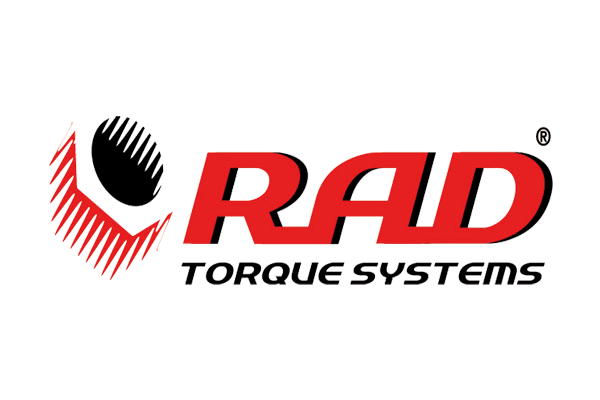The Biggest Dangers of a Weld Head Overheating
Ensure your welding machine gets the right amount of care to protect your welds from becoming unsafe and weak. One aspect of this maintenance regimen is ensuring that the vital temperature levels inside the welder’s head stay consistent.
Because a lack of temperature control can quickly cause issues with your weld head overheating, recognizing and responding early to signs of potential temperature problems saves you time and valuable money on repairs or replacements down the line. Let’s look at the biggest dangers of a weld head overheating and what to do if they arise.
What Is Weld Head Overheating and What Causes It?
Weld head overheating occurs when the internal temperatures of the weld head exceed safe levels. This increase can happen because of several factors, such as too much current being passed through the welder or a build-up of dirt and debris in and around the welding gun (which obstructs airflow).
When the temperature inside the weld head rises, it can cause permanent damage to both the surface and internal components of your welder’s head. In severe cases, if temperatures exceed their safe limits for too long, the welding machine could fail, leading to costly repairs or even replacement.
The Potential for Fire Hazard With Overheating
The worst-case scenario when it comes to weld head overheating is fire. A fire can break out from too much current passing through the welder, which produces more heat than is safe for the internal components of the welding machine.
This heat can lead to the melting or igniting of nearby flammable materials, such as lubricants or plastics. This can cause serious damage to the welding machine and any affected property around it.
Impact of Weld Head Overheating on the Structural Integrity of a Project
The structural integrity of any welding project is severely compromised when a weld head overheats. High temperatures can cause uneven heat distribution and cooling rates, which in turn can result in weak points in the overall structure of the weld.
What may look like a complete weld on the surface could be full of imperfections below, resulting in potential weaknesses that could cause catastrophic structural failure in the long run.
Potential for Long-Term Damage to Parts in a Project from Heat Stress
Heat stress from an overheating weld head can cause various long-term problems to the internal components of your welding gun. Extreme temperatures can damage and weaken important parts, such as the power adapter sockets or tips, potentially leading to further issues in the long run if you do not address them promptly.
Some examples of this could be the melting or warping of the electrical contacts, resulting in poor connection performance. It can also cause parts to become brittle, leading to cracking and fracture down the line.
How To Avoid Weld Head Overheating
The last thing you want is for your weld head to overheat, so it’s important to be aware of a few steps you can take to help ensure this unlikely occurrence never happens.
Proper Welding Procedures
One of the crucial aspects of avoiding weld head overheating is following proper welding procedures. These procedures include prepping the weld joint properly, selecting the appropriate welding technique, and adequately adjusting the machine’s power and settings. Proper welding procedures ensure optimal processes, enabling you to avoid overheating and other issues.
Use of Cooling Aids
Cooling aids can prevent weld head overheating. These aids can come in different forms, from coolant sprays to water-cooled systems. While some thermal cooling aids are expensive, water-based coolants are affordable and widely used. Be sure to use recommended cooling aids properly to achieve optimal results and avoid issues like undercooling, which can lead to cracking, porosity, and corrosion.
Maintaining Adequate Distance
Another effective way to avoid weld head overheating is to maintain an adequate distance between the weld head and the workpiece. A shorter distance will cause greater heat concentration in the weld head area, leading to overheating and other unwanted outcomes. Therefore, you should maintain the recommended distance throughout the welding process.
Proper Selection of Welding Supplies and Equipment
The right selection of orbital welding supplies can prevent weld head overheating. For instance, a welding machine with advanced features like a digital interface helps control the welding current, maintain optimal temperature levels, and prevent overheating. More advanced machines have built-in cooling systems to dispel excess heat and maintain optimal temperatures.
Weld Joint Design
Weld joint design plays a significant role in preventing weld head overheating. Weld joint preparation, including grinding and cleaning, helps reduce weld contamination and overheating. Additionally, joint design helps distribute heat away from the weld head and provides pathways for the dissipated heat to travel, reducing heat concentration that could lead to overheating issues.
Final Checklist for Ensuring Proper Cooling of a Weld Head
By following these tips, you can avoid weld head overheating and ensure that your welding projects are safe and successful. To help make sure it goes well, here’s a quick checklist of points to keep in mind:
- Follow proper welding procedures throughout the process.
- Use recommended cooling aids properly.
- Maintain an adequate distance between the weld head and the workpiece.
- Use advanced welding machines with built-in cooling systems.
- Prepare the weld joints properly for optimal temperature control.
- Adequately adjust machine settings to prevent overheating.
Follow this checklist to ensure proper cooling of your weld head, and take steps to avoid potential overheating issues in the future.
When it comes to weld head overheating, prevention is key. Properly cooling the weld head and following best practices when welding is essential for ensuring a safe and successful outcome for your welding projects. With these tips in mind, you’ll be able to avoid the biggest dangers of a weld head overheating and confidently complete your job!
You should also refer to your welding machine user manual for proper operating procedures and maintenance instructions. Reading up on the machine’s features can help ensure a successful outcome every time. By following these tips, you can be sure that your weld head stays nice and cool throughout any welding project!
SEC Industrial has a wide selection of welding supplies and equipment to help you complete your projects safely and efficiently. Our team can provide high-quality products and helpful advice on avoiding weld head overheating and other issues. Contact us today for more information or to place an order!
